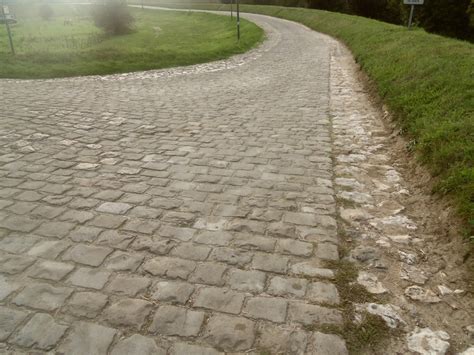In ‘La Psychomachia de Prudencio: un artefacto inspirado’, Circe 25 (2021) 141-59, Juan Manuel Danza (Bahía Blanca, Universidad Nacional del Sur) compares Sidonius’ Ad Catullinum poem for the negative metapoetics of Late Antiquity.


In ‘La Psychomachia de Prudencio: un artefacto inspirado’, Circe 25 (2021) 141-59, Juan Manuel Danza (Bahía Blanca, Universidad Nacional del Sur) compares Sidonius’ Ad Catullinum poem for the negative metapoetics of Late Antiquity.

Alison John writes on ‘(Mis)Identifying Teachers in Late Antique Gaul: Sidonius’ Ep. 4.11, Mamertus Claudianus and Classical vs. Christian Education’, in Mnemosyne.
Online Publication Date: 11 May 2021.
In: Advance Articles, open access.

Douglas Underwood covers Bordeaux, Toulouse and Narbonne in ‘Good Neighbors and Good Walls: Urban Development and Trade Networks in Late Antique South Gaul’, in: Michael J. Kelly and Michael Burrows (eds), Urban Interactions: Communication and Competition in Late Antiquity and the Early Middle Ages, Binghamton, NY: Gracchi Books, 2020, 373-427.
Available at Punctum Books open access

Francesco Montone studies the section of the Panegyric on Anthemius where goddess Roma sums up her former conquests: ‘Sidonio Apollinare e i suoi modelli: un mosaico letterario e le conquiste orientali di Roma’, Parole Rubate 23 (2021) 207-22.
Free access here

Annick Stoehr-Monjou returns to Ep. 1.5 in the light of memory: ‘Enjeux mémoriels d’un récit de voyage de Lyon à Rome: Sidoine Apollinaire (Lettre 1, 5)’, Viatica HS 4: Fabrice Galtier (ed.), Voyage et mémoire dans l’Antiquité romaine: les écrits latins sur le voyage et leurs enjeux mémoriels, 2021.
Online here
‘Memory Issues of the Travel Narrative from Lyon to Rome by Sidonius Apollinaris (Letter 1, 5)‘
Abstract. In Letter I, 5, Sidonius Apollinaris gives to posterity the memory of his prestigious journey from Lyon to Rome. This study explores how the author gives an account in which memory (§ 1 memoratu) takes a central place, how he reworks the travel narrative, plays with a rich literary memory (Horace, Vergil, Lucan, Pliny the Younger…) and builds self-memory. The re-evaluated memory of Silius Italicus, Prudentius and Claudian’s VI Panegyricus of Honorius is crucial in arguing that Sidonius renews the places of memory and excludes pagan elements. He also gives a testimony of his Christian faith and a discreet criticism of General Ricimer.

Filomena Giannotti investigates the thorny question whether Thaumastus was Sidonius’ uncle or his cousin in ‘Pronus prope o prope patruum? Nota sul Propempticon ad libellum di Sidonio Apollinare (c. 24,84-89)’, BSL 51 (2021) 169-77.
Abstract. As the penultimate stage of his Propempticon ad libellum Sidonius Apollinaris imagines that his nugae arrive at Tres Villae, where the two Thaumastus, father and son, live (carm. 24,84-89). Together with Apollinaris and Simplicius, Thaumastus has traditionally been identified as Sidonius’ paternal uncle, but Ralph W. Mathisen has recently suggested that they were the paternal cousins and coevals of Sidonius. Even though really deserving, this suggestion is based on some doubtful points, which are analyzed here individually, with reference to some passages of Sidonius’ letters (epist. 3,12,5 lines 1-2; 3,11; 5,4,2; 5,6,1; 5,3,1) and in particular to the verse hunc pronus prope patruum saluta (carm. 24,89). As regards this verse, the new exegetic hypothesis of this paper is that prope is not related to patruum, but to pronus, through an anastrophe, like in some other cases in Sidonius. From a semantic point of view, the awkward interpretation “almost a paternal uncle”, on which Mathisen bases his thesis that Thaumastus was not Sidonius’ patruus but the husband of Sidonius’ aunt, would be replaced by the interpretation “almost prone in a bow”. This would seem to be more in line with the playful personification of the libellus and confirm the traditional theory about the relationship between Sidonius and Thaumastus.

Péter Kovács examines, and refutes, Avitus’ presumed expedition to Pannonia in Acta Archaeologica 71 (2020) 661-68: ‘Emperor Avitus in Pannonia?’
Abstract. In his paper the author examines the sources of the supposed Western Roman military expedition of Emperor Avitus in Pannonia in 455 that was thought to be the last Roman military action in the territory of the former Roman province. Analizing the sources, he comes to the conclusion that during his short reign, Avitus had no time to visit the province and his route (iter) mentioned by Sidonius Apollinaris must be identified with his journey from Arelate to Rome. The Roman military action in Pannonia can probably be identified with a short demonstrative campaign in the SW region of the dioecesis (i.e. Savia) or with a legation of the Pannonian Barbarians to the emperor in Northern Italy.

Giulia Marolla has published ‘Il trasformismo dell’aristocrazia gallica nelle epistole di Sidonio Apollinare / Political Flexibility of the Gallic Aristocracy in Sidonius’ Letters’, eClassica 6 (2020) 59-71. Its motto is from the Gattopardo: Se vogliamo che tutto rimanga com’è, bisogna che tutto cambi.

Recently out: Francesco Montone, ‘Imperatori romani a caccia. L’Ars venandi nei panegirici di Sidonio Apollinare’, Salternum 44-45 (2020) 79-100.

Gavin Kelly has contributed with ‘Sidonius as a Reader of Rutilius Namatianus’ to the Festschrift for Marisa Squillante, Rossana Valenti and Concetta Longobardi (eds), DISSONA NEXIO. Rotte del sapere, tra storia e futuro per Marisa Squillante, Invigilata Lucernis 42 (2020) 151-61.
Volume ToC here